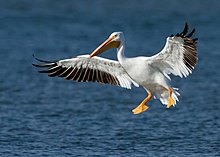 |
| Early morning smoke from a private burn |
This wildfire season had been extremely dangerous, smokey and long. The first fire began before the official start on June 1. That one was 80% contained by July 14. Later things really got burning. An immense weather front pushed over the Cascades bringing with it 2800 lightening strikes, resulting in 150 wildfires, devastation for thousands of acres of woodlands and months of smoke and unbreathable air. Late in the season as those fires died down, newer, deadlier ones ignited. The Delta Fire in Northern California closed I-5, the main North-South highway for 5 days and shut down Amtrak on the day I was supposed to ride up to Portland. The Camp Fire caused at least 85 fatalities and destroyed 153,336 acres. It wasn't contained until late November, well after the official end of fire season. Things aren"t really out until the fall rains and winter snows put them out. Even then fires have been known to smolder under the snows and again flare up the next season when conditions are dry.
Meanwhile, burn season officially began October 27th which explained why, on that day, we were seeing those five distinct columns of smoke, and have seen smokes almost every clear, windless day since. It's ironic but true, in the land of wildfires the best offense is controlled burning. When their not putting out fires, Wildfire fighters are starting prescribed burns.
 |
| One year after the Pelican Butte Wild Fire |
In our hikes out West, S.D. and I have hiked through "forests" blackened and devastated by wildfires, logged forests with huge slash piles or the blackend dirt spots where slash piles were burned. We've also hiked through dense forests crowded with deadfalls and lots of downed wood on forest floors. Fuel for future wildfires. Walking through there it was clear that any fire there would be devastating. Prescribed, controlled burns were the only possible solution.
But burn season isn't just for wildfire fighters. Residents in fire country also have the responsibility of maintaining defensible space on their property. When the season opens, its time to start burning wood debris around the home. S.D. and I have torched off three such piles. For an ex-East Coaster it
 |
| Making our home fire safe- burning juniper |
Actually, the only time things aren't burning out here is the short window between the end of Burn Season and the first fire of Fire Season. Fortunately the prescribed burns are controlled so the whole basin isn't smoke filled and no one has to worry about losing their homes or lives in a wildfire.







